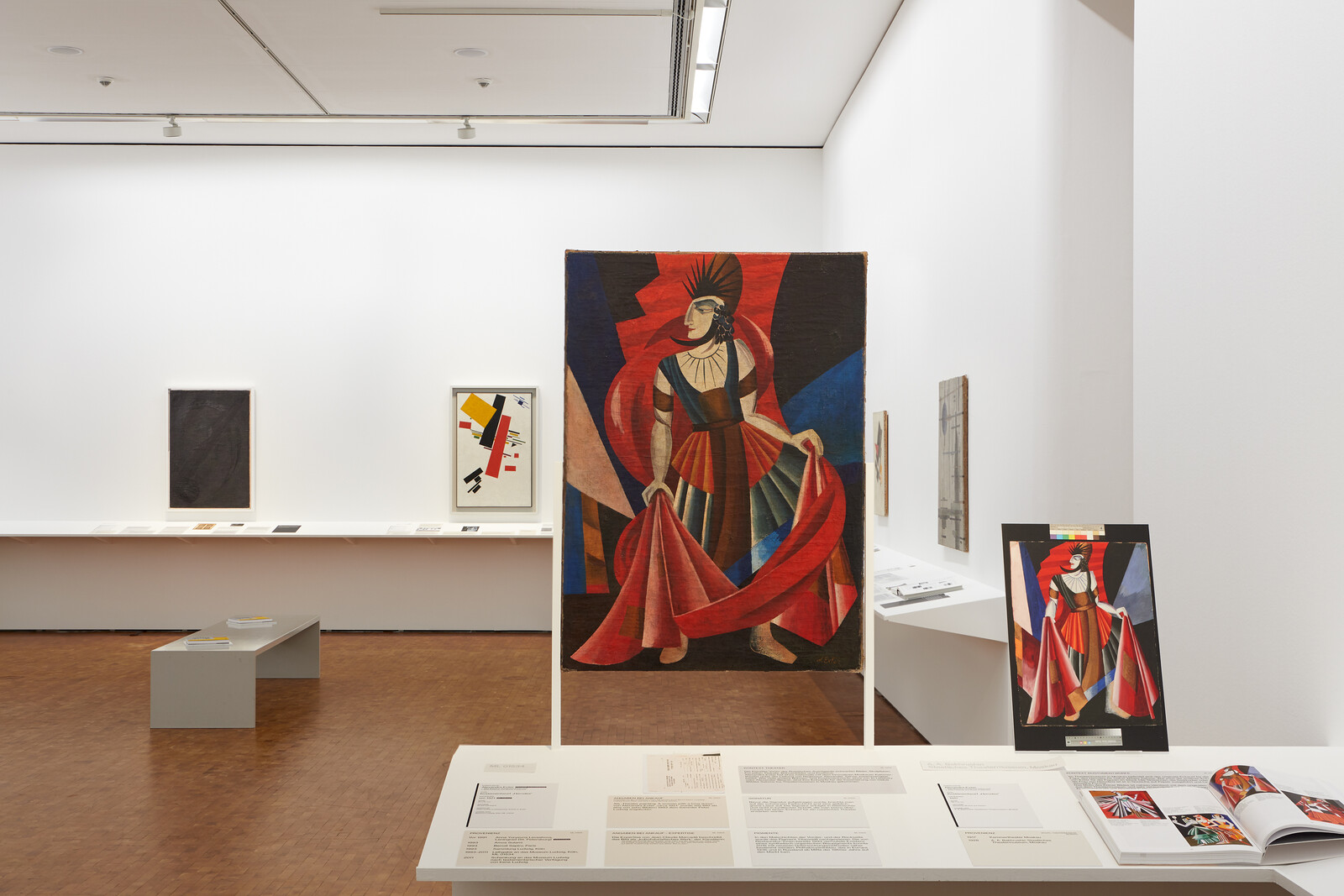September 26, 2020–January 3, 2021
Heinrich-Böll-Platz
50667 Cologne
Germany
Hours: Tuesday–Sunday 10am–6pm
T +49 221 22126165
info@museum-ludwig.de
After a long period in which it was taboo, an increasing number of museums are becoming more transparent about how they deal with inauthentic works and exchanging knowledge. With a studio exhibition on the Russian avant-garde, the Museum Ludwig is presenting research on the authenticity of works in its collection. Thanks to Peter and Irene Ludwig, in addition to Pop Art and Picasso, the Russian avant-garde is a core focus of the museum’s collection, with more than 600 works from the period between 1905 and 1930, including some 100 paintings.
For various reasons, works of questionable authorship have continually found their way into private and institutional collections. Works by Russian avant-garde artists were counterfeited particularly often (due to their delayed reception after Stalinism, for instance). Even recently, paintings from this era that have turned out to be inauthentic have been presented in museums. The Museum Ludwig is also affected and is currently systematically investigating its collection of paintings with the help of international scholars. This research represents an important contribution to the international discourse on the Russian avant-garde. One goal is to identify and distinguish incorrect attributions in the museum’s collection.
The exhibition presents the methods and findings. With 27 works by, or formerly attributed to Ljubow Popowa, Kliment Redko, Nikolai Suetin, Nina Kogan, El Lissitzky, and other artists, it presents art-historical and technological methods for making artistic authorship and questionable attributions recognizable. In addition to works from the museum’s own holdings, Momus in Thessaloniki—home to the Collection of George Costakis—as well as Museo Thyssen-Bornemisza in Madrid kindly provide loans of original works that served as templates for our not-authentic pictures.
Based on noticeable examples, visitors can look behind the scenes and gain an understanding of provenance research and various investigative techniques such as infrared and X-ray images, fabric tests, and material analyses. Certain pigments, such as titanium white, serve as markers that allow the dating of a painting to be verified. The exhibition presents different perspectives by researchers in restoration, art technology, and art history on the question of the authenticity of an artwork.
A film by Constantin Lieb (production: art-beats.de) offers insight into the extensive examinations and cooperations with different scientists. The film is also available on the Museum Ludwig’s website.
A symposium with international experts will take place on November 6 and 7.
Of the 100 paintings in the Russian avant-garde collection at the Museum Ludwig, half have undergone an art-historical and technological examination, most by Dr. Maria Kokkori, art historian and art technologist at the Art Institute of Chicago and a specialist in the Russian avant-garde, in collaboration with the painting restorer at the Museum Ludwig, Petra Mandt. Fourteen paintings by Mikhail Larionov and Natalia Goncharova were selected for a fundamental examination of the Russian Avant-Garde Art Project, which was conducted by Dr. Jilleen Nadolny from Art Analysis & Research Institute in London.
The examination of the paintings was generously supported by the Peter and Irene Ludwig Foundation and the Russian Avant-garde Research Project; additional funding came from the Gerda Henkel Foundation and the ZEIT Stiftung. The exhibition, catalogue, and accompanying symposium are also supported by the Peter and Irene Ludwig Foundation and the Russian Avant-garde Research Project as well as the Ernst von Siemens Kunststiftung, the Beatrix Lichtken Stiftung, the Freunde des Wallraf-Richartz-Museum und des Museum Ludwig, and the Fritz Thyssen Foundation.
Curators: Rita Kersting and Petra Mandt, in collaboration with Juliane Duft
